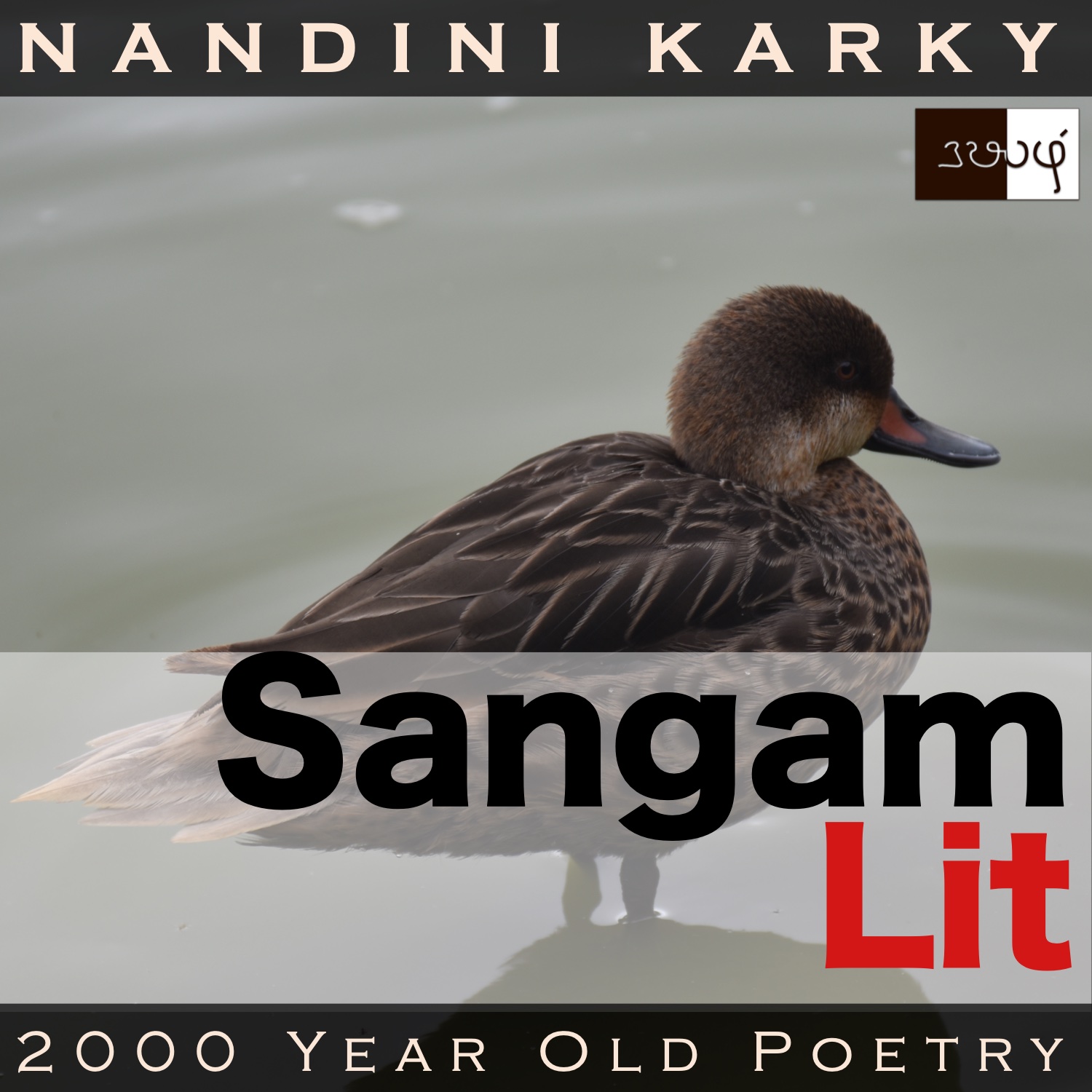Podcast: Play in new window | Download
Subscribe: Apple Podcasts | Spotify | Amazon Music | Android | iHeartRadio | TuneIn | RSS | More

In this episode, we perceive the soaring worry in a lady about the man’s commitment, as depicted in Sangam Literary work, Kurunthogai 25, penned by Kabilar. Set in the mountain country of ‘Kurinji’, the verse speaks in the voice of the lady to the confidante, expressing the helplessness of her situation, as the man continues to delay seeking her hand.
யாரும் இல்லை; தானே களவன்;
தான் அது பொய்ப்பின், யான் எவன் செய்கோ?
தினை தாள் அன்ன சிறு பசுங் கால
ஒழுகு நீர் ஆரல் பார்க்கும்
குருகும் உண்டு, தான் மணந்த ஞான்றே.
This one is all about witnesses! The verse opens with the intriguing words ‘யாரும் இல்லை’ meaning ‘there was no one’. Thereafter, we encounter ‘தானே களவன்’. Before we get into its meaning, I should mention here that some scholars understand the second word in this phrase as ‘கள்வன்’ meaning ‘thief’. Natural is their confusion for there was no provision to place the dot above the letter ‘ள’ on a palm script, and many such dotted consonants were left to the imagination of interpreters, who defined these words based on context. However, I have chosen to side with other scholars who say that the phrase means ‘he was the only one there’ and ‘களவன்’ is to be understood as ‘களத்தில் இருந்தவன்’ meaning ‘the one who was present in that place’. Moving on from this linguistic debate, we take in elements from nature in ‘தினை தாள்’ meaning ‘millet stalks’, ‘ஆரல்’ referring to ‘sand eels’ and ‘குருகு’ referring to a bird. Ending with the words ‘தான் மணந்த ஞான்றே’ meaning ‘when he wed me’, the verse invites us within.
What do birds and eels have to do with how the lady feels? The context tells us that the man and lady had been leading a love relationship and that the man had been trysting with the lady for quite some time. However, he seemed to be showing no interest in formalising their union. So, one day, the lady turns to her confidante and says, “No one there; He was the only witness; If he were to falsify that pledge, what can I do? On that day when he became one with me, a bird with tiny, green legs, akin to millet stalks, stood searching the flowing waters for a sand eel!” With these words, the lady gives word to the anxiety in her heart at the man’s thoughtlessness in delaying their marriage.
A witness to love, is what this verse seems to mull about! The lady first declares there was no one there. When we ask her where, without replying, she talks about the man being the one person present. Her worry is then crystallised in the words asking whatever could she do if the man refused to stand by his promise to her. From these abstract thoughts in her mind, she turns to the real world and describes a bird that had tiny legs like that of millet stalks and points to how this bird seems to be intent on watching the flowing waters, keeping a sharp eye out for sand eels. When we are wondering what she’s suddenly talking about, she makes it clear that it was this very bird that was the witness on that day when the man wed her!
Wedding over, isn’t it? Why is the lady worried then? Looks like there seems to have been two weddings in ancient times. Not the two different ones we have now – one in the style of the bride’s family customs and other, in the style of the groom’s family customs! The ancients in the Sangam period seem to have considered the beginning of their love relationship as a wedding moment too. Then, once their relationship progressed, the man would seek the lady’s hand and wed her, in the presence of elders and family members, proclaiming his union with the lady to the town entire. Returning to the verse, the lady languishes considering how the man seemed not to follow this prescribed path to their permanent happiness. She panics thinking what if the man doesn’t stand by his words to her. She further stresses how there’s no one she could call as witness other than the bird that stood by, searching for something to eat! Through this expression of angst, perhaps the lady is nudging her friend to persuade the man to seek her hand without any further delay. In the twenty-first century, when we hear about serious ‘prenuptial agreements’, contracts even before the wedding, being signed and sealed in a court of law, it’s indeed rather humorous to see this lady from the past mulling over the help she would get from the only witness to her love relationship – a bird with food on its mind!




Nice verse. My empathy for the lady